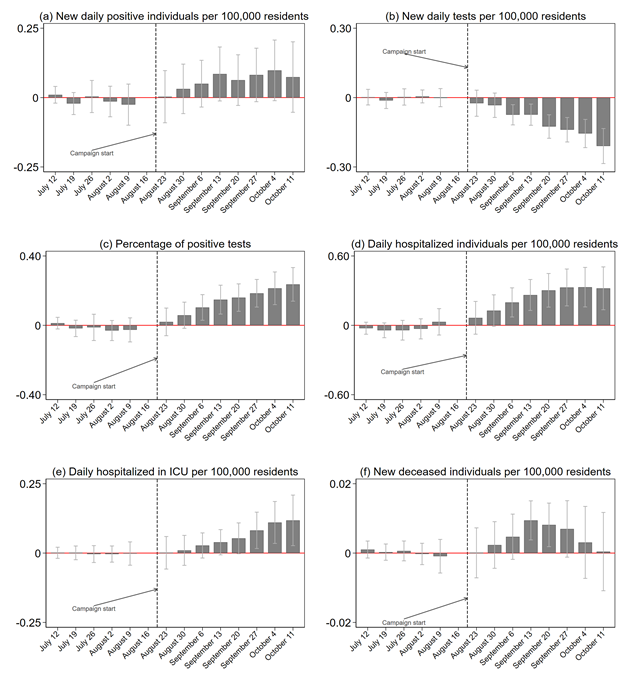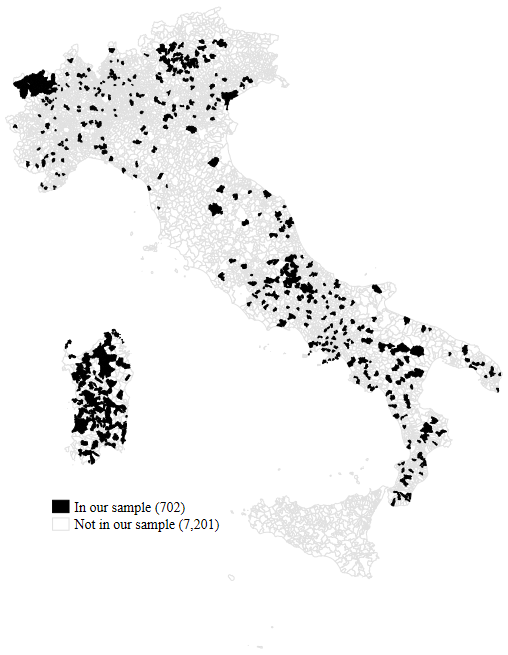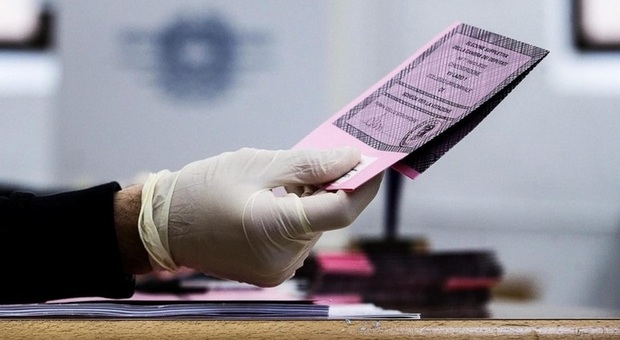Elections and the COVID-19 pandemic: to vote or to postpone?
The COVID-19 Pandemic’s Effects on Voter Turnout – Picchio M., Santolini R., 2022 – European Journal of Political Economy
To vote, or not to vote? Electoral campaigns and the spread of COVID-19 – Cipullo D., Le Moglie M., 2022 – European Journal of Political Economy
The COVID-19 outbreak has changed the lifestyle of people worldwide, forcing them to stay at home, to wear face masks, and to maintain social distancing. The pandemic challenged the possibility to carry on essential activities needed for the functioning of our societies. Schools and several economic activities had to stay closed for a long period; recreational and cultural associations, sports and religious activities were also subject to limitations, which have been removed only recently. All these restrictions imposed by governments had only one key and most important goal: to curb the spread of the virus.
Restrictive policies have been far-reaching and also led to a debate on the timing and modes of the political agenda and democratic process in general. Since the beginning of the pandemic, many countries looked for a compromise between the need to renew the institutions’ legitimacy and the need to limit the spread of COVID-19.
The link between elections and the spread of the virus certainly represents one of the most difficult relationship to evaluate and it is two-directional. On the one hand, elections give the legitimacy on which democracies are based – this is especially important when governments and parliaments are called upon to take restrictive measures that need a verification of the people’s mandate – and cannot be achieved without a free and fair development of voting procedures and electoral campaigns. On the other hand, the epidemiological risks connected with a regular election process might be high, especially during pre-election campaigns that cause crowded meetings where it is difficult to preserve social distancing.
However, because of the increased epidemiological risks associated with the elections, people may fear being infected at the polling station, with negative consequences on the voter turnout. Electoral participation may be discouraged, thus weakening the democratic process.
Do election campaigns and the voting process actually contribute to the spread of the virus? And on the other hand, does the spread of the virus really reduce the electoral turnout?
Two studies help us answer these questions, both recently published in the European Journal of Political Economy and based on Italian data.
Davide Cipullo and Marco Le Moglie attempt to answer the first question in the article To vote, or not to vote? Electoral campaigns and the spread of COVID-19. They analyse the impact of the diffusion of COVID-19 on the elections held in Italy on the 20th and 21st September, 2020. More specifically, in that occasion, people were called upon to vote for a constitutional referendum, at the national level, and to renew a selected number of local administrations (both regional and municipal) in 7 regions and around 1000 municipalities. Thanks to this territorially differentiated configuration, the authors are able to compare, before and after the official beginning of the pre-election campaign (22nd of August), regions in which elections occurred for both the regional administration and the constitutional referendum, and regions in which only the constitutional referendum took place. The argument relies on the hypothesis that the pre-election campaign was far more intense in the former group of regions than in the latter.
The main results of the study are clearly represented in Figure 1: the campaign contributed to worsen the spread of COVID-19 in regions where the campaign was more intense. Whereas no statistically significant difference between the two groups of regions is present before the campaign, the epidemiological situation in the two groups of regions changes dramatically after its start. Regions where the campaign was more intense detected an increase in the number of individuals who tested positive for COVID-19 (7%), in the share of positive tests over the total number of tests supplied (15%), in the number of individuals who had to seek hospital care and intensive care (24% and 5%, respectively), and the number of deceased individuals (1%). Moreover, it is interesting to mention that the pre-election campaign had instead a negative impact on the number of tests conducted in each region (8%). This latter result suggests another channel through which elections may have increased the diffusion of COVID-19.

Matteo Picchio and Raffaella Santolini analyse the opposite relationship and answer the second question. In the article The COVID-19 Pandemic’s Effects on Voter Turnout, they assess whether the voter turnout in the 2020 local governments elections in Italy was affected by the intensity of the COVID-19 outbreak, as measured by the mortality rate of the elderly. The hypothesis is that the pandemic discouraged voters from going to the polls because of the higher health risks. Voting abstention may be higher in areas where the COVID-19 outbreak had a more severe impact because people perceived a greater risk for their health. The authors also question whether the effect may be different among men and women and if the pandemic affects more the voter turnout in densely populated areas, where people are more exposed to social contacts.
The analysis is based on datasets at municipality level from different sources containing data for a sample of 702 municipalities for the period 2015-2020. Figure 2 displays their geographical location.

According to this study, 1 percentage point (pp) increase in the elderly mortality rate significantly decreased the voter turnout by 0.5 pp, with no gender differences. The effect was especially strong in densely populated municipalities. These findings suggest that holding elections during a pandemic may discourage people from voting and thereby weaken the democratic process.
The two studies offer us some interesting and complementary considerations. First of all, a strong increase in the number of individuals who tested positive to COVID-19, albeit associated with a limited increase in the number of deceased individuals, suggests that high-risk groups of individuals participated to a lower extent in the 2020 elections.
In terms of policy-making, forms of postal and/or electronic voting may be means to limit the disruption of the democratic process, in that they allow people to vote safely and can curb the decline in the voter turnout during the pandemic. An example of this is the strengthening of the postal vote in the US for the 2020 Presidential Elections. However, postal and electronic voting systems may generate other problems, like electoral fraud and poor reliability and transparency. Other countries, including Italy, have decided to hold elections in the summer months to limit the risk of contagion. The trade-off between reliability of voting and democratic representation should be carefully considered when designing the electoral procedures for voting during a pandemic.

